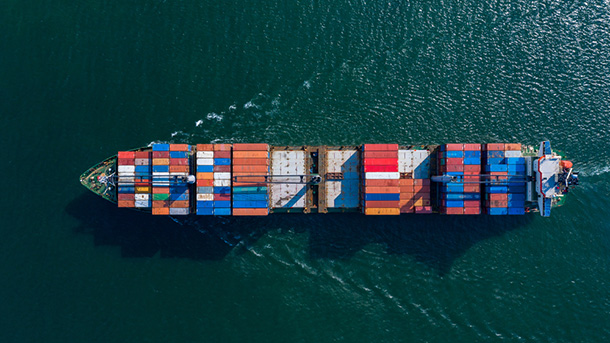
If your domestic eCommerce company is growing, the next logical step is to expand to international markets. Building a global shipping strategy is the best way to ensure your business finds success overseas.
How to Develop an International Shipping Strategy
1. Start Small
Start with one or two countries that frequently visit your store. You can use your shop analytics to evaluate user trends and choose the countries that use your site most. You can also use data to assess different global markets and consumer trends to determine the best fit for your business.
2. Decide What to Sell
For small businesses, it can be challenging to compete with large corporations that control the market. Unfortunately, there can be significant trade reducing effects of marketing power in international shipping. To be competitive, experts recommend you operate within a niche market when expanding globally.
Hazmat Shipping Labels Are Required for Safety When Needed
This may mean you don’t sell your entire product lineup overseas. Some of your items may not appeal to international markets, or they may be breakable or costly to ship due to the weight or a lack of shipping competition to certain markets. Begin by selecting a few popular items for your chosen foreign market. You always have the option to expand your offerings if you notice increased customer interest and demand.
3. Adapt Your eCommerce Site
Your website should be simple and straightforward, with clear images of your product and engaging product descriptions. However, many consumers don’t feel comfortable interacting with a site if it isn’t in their native language. If possible, consider including adding a translation plugin to your website to access a broader global consumer base.
Most popular payment gateways used on eCommerce sites feature intelligent data collection and IP geolocation, which automatically localize the currency and payment options to match the customer’s country.

4. Understand How Shipping Works
While you don’t need an in-depth knowledge of the shipping industry, you should have a general understanding of how the process works for your specific goods. If your store carries perishables or food items, research how the food industry ships across continents to avoid potential damage to your goods in transit.
Order Your Barrels for Shipping Overseas Today!
Inquire about specific packaging and labeling for your items if your store ships goods that are considered hazardous. Without the proper packaging and hazmat shipping labels, you may find your goods held up at port.
Incoterms, a series of internationally recognized agreements between an importer and exporter, is also vital to know as they can impact your overall shipping costs. Choose Delivery Duty Paid (DDP) rather than the commonly used Delivery Duty Unpaid (DDU). This can help to avoid delays in customs and prevents any surprise pick-up fees for customers.
5. Understand Specific Countries Laws and Regulations
Some countries have restrictions on certain products, while others ban some goods completely. For a smooth shipment, it is vital before expanding into an international market that you understand the specific rules and regulations of the country to which you are shipping.
Several online resources, such as the UPS website, break down the rules and regulations by country. If you limit distribution to just a few countries, go to the specific country trade website to find out whether your product is considered hazardous or has restrictions placed on it.
6. Determine the Landed Cost
The landed cost refers to the total cost of transporting your shipment to its final destination. It includes shipping costs, taxes, duties, handling fees, insurance and licensing fees. The landed cost has a significant impact on your goods’ total cost and the shipping fee you charge your customers.
Depending on the items you are selling, you can ask the shipping company about competitive rates for full container loads or use multiple carriers to save on shipping costs.
It is essential to be transparent about any taxes, duties and fees the customer might incur to maintain a high level of trust and customer satisfaction. The best way to price your goods for shipping overseas is to find out how much freight shipping is and add to the manufacturing cost of your item. Then, add the handling fees and taxes and, finally, increase the total by your predicted profit margin.

7. Choose the Right Packaging
Packaging not only promotes your brand but also protects your goods during transit. Ensure your packaging is durable but simple so shipping labels can be seen clearly.
If you are shipping hazardous materials, use barrels for shipping overseas that are UN-certified and adhere to strict safety regulations enforced by the International Maritime Organization (IMO), International Civil Aviation Organization (ICAO) and the Code of Federal Regulations. This not only keeps everyone safe but ensures your product arrives intact.
The Bottom Line
Expanding your business overseas doesn’t need to be overwhelming. With a little research into the global marketplace and shipping industry, you can set up an international eCommerce business that delivers its product on time, every time for better customer satisfaction.
At Air Sea Containers, we carry a vast range of shipping labels, packaging materials and custom cardboard boxes to help make your international venture run more smoothly. Explore our selection online or contact us at (866) 596-9448 to find out more about our global shipping products.
[ad_2]
Source link


